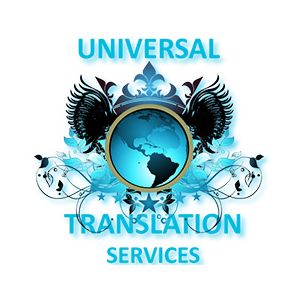Translation Office Arabic to EnglishPosted by universal translation service on March 13th, 2020 Arabic is a title implemented to broods of Classical Arabic language of the 6th century AD. This involves both literary language and types of Arabic spoken in a wide curve of territory extending across the Middle East and North Africa. It is the 4th most used language with approximately 281 million native speakers in the world. Though, while it is a common language on an international level; it also comes with a bunch of complexities that make it challenging to interpret into other languages. As a Semitic lingo, it has many dialects to languages spoken, which indicates that it takes an extremely skilled interpreter to turn it successfully. In some Arab nations, potential consumers could be annoyed by the description that would be considered proper in Western countries. Companies usually make the mistake of just localizing and interpreting their Arabic text into English while ignoring that story plays an important role in correctly carrying their translated message. Whether you need English dubbing or subtitles for an Arabic movie, Arabic business papers in English, or Quran texts translated to English, you need to take help of Arabic to English interpretation services. You must find a professional translation office near you that can translate your Arabic text into English. Here, we present the most standard difficulties that come with an interpretation and talk why experienced professionals are an essential part of the problem when it comes to making it correct. • Dialects One of the complications in interpretation comes in the sort of a huge assortment of dialects. While in English, people in the US, UK, and Australia may speak slightly different dialects of the language, it’s still the same, and even they create from different parts of a structure, they would all know each other rapidly. In Arabic, it’s not the same story. An exclusive feature of language is that each of the nations that use it has created their completely different lingo style invented from Classical sources. What this indicates is that even two people may be talking to each other in Arabic but if they are from two different nations, then they could probably have great difficulty in understanding each other. Normally, there are four regional dialects of Arabic. Egyptian; Moroccan– spoken in Tunisia and Algeria; Gulf– spoken in Gulf nations and the Levant– spoken in Syria, Jordan, Lebanon, and Palestine. Among these regional dialects are hundreds of local dialects and localization that need different interpretations. For example, a Moroccan Arabic translation is distinct from an Iraqi Arabic to English translation, because these two dialects are not understood. Don’t make a false presumption that any dialect of the language in any nation will translate into English the same way. This is a problem when it comes to interpretation because although someone can be fluent in Arabic, the odds are that they cannot be good in more than one or two variations of this language. • Country Specific It is a complicated language, particularly if you plan to interpret your Arabic text into English. It is allotted as a member of the Semitic language family, English as a part of the Indo-European language family. To regulate written text in Arabic, Modern Standard Arabic (MSA) is the language of newspapers and the telecast media. It differs from local dialects and standard. Language interpretation problems can be classified into linguistic and cultural categories. Linguistic problems include syntax, text differences, lexicon, morphology, rhetorical differences, and pragmatic factors. Cultural problems occur for the Arab translator who may find certain expressions in language that have no equivalents in English. For instance, the wordتيمم tayammum, meaning “the Islamic act of dry ablution using filtered sand or soil, which may be done in place of ritual washing if no clean water is available,” doesn’t have a similar term in English. • Spoken Language Another problem that can come up when it comes to interpretation is what a customer wants to use it for. The translator makes sure they get what any reason documents are being translated for is that written and spoken language are two completely dissimilar effects. If an interpreter knows that the client is searching to have something interpreted for use in an article, a paper or a more precise online column, then possibilities are it can be turned into Modern Arabic, which technically all nations use for publications, TV shows, and some other media forms and is normally common across the Arab state. Though, when it comes to spoken languages, it’s a different thing. If something is to be used for journals and advertisements, or other spoken ways of talking, then SMA is not important, and we need to know what nation the materials will be used in, so we can turn into that nation’s particular Arabic rather than the language in normal. The difference between the source and the target language, as well as variances in their spiritual and societal values, makes the process of translating from Arabic to English a huge challenge. Arabic may be one of the widely spoken languages on the earth, but its unique properties make it one of the most difficult languages to interpret to and from. Only if a professional interpreter has a great knowledge of the culture, target language, and its specific linguistic customs and variations, he/she can interpret the designed meaning and translate it accurately. Hire professional only to get an accurate result! Like it? Share it!More by this author |


